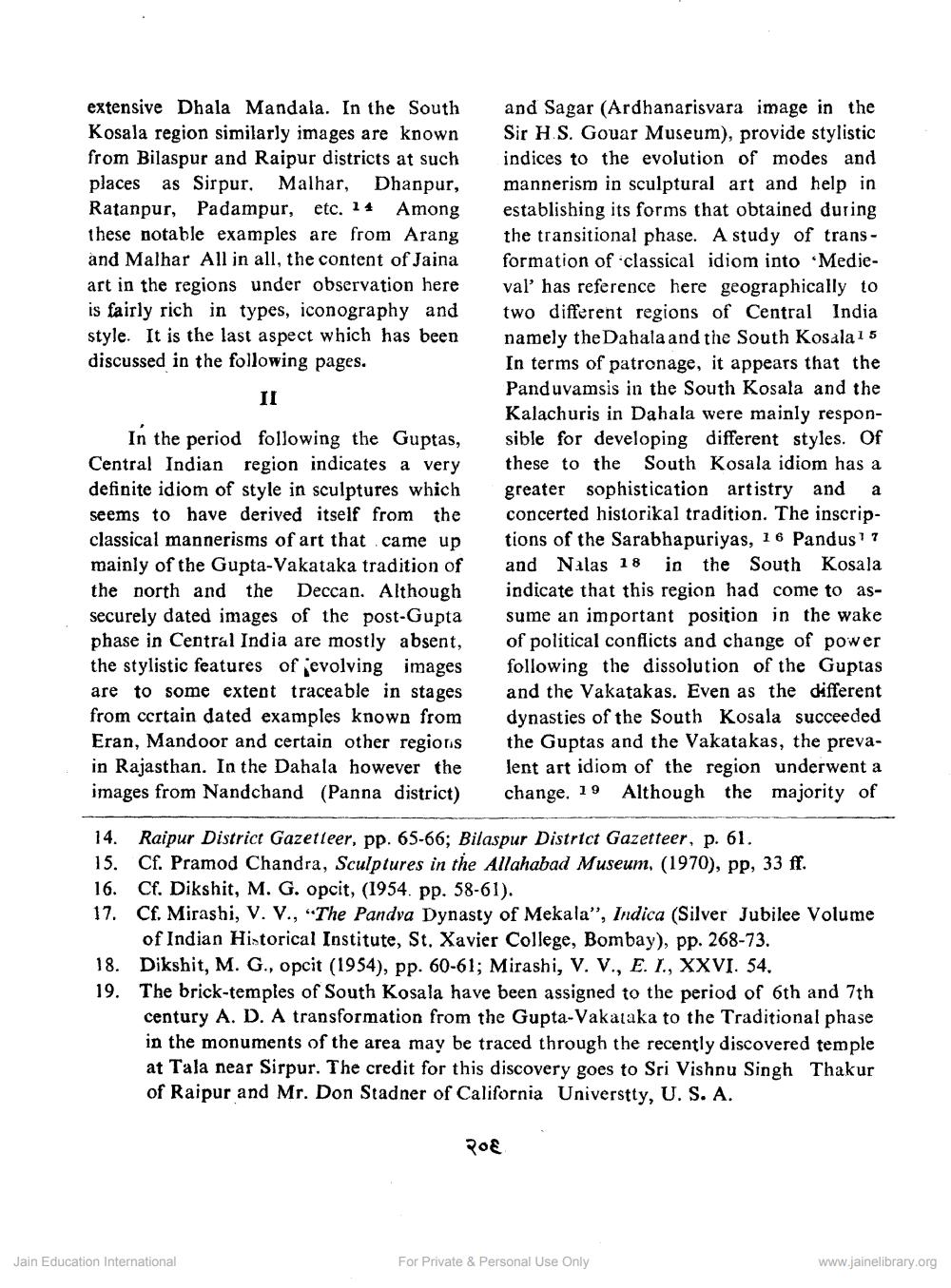________________
extensive Dhala Mandala. In the South Kosala region similarly images are known from Bilaspur and Raipur districts at such places as Sirpur, Malhar, Dhanpur, Ratanpur, Padampur, etc. 14 Among these notable examples are from Arang and Malhar All in all, the content of Jaina art in the regions under observation here is fairly rich in types, iconography and style. It is the last aspect which has been discussed in the following pages.
IL
In the period following the Guptas, Central Indian region indicates a very definite idiom of style in sculptures which seems to have derived itself from the classical mannerisms of art that came up mainly of the Gupta-Vakataka tradition of the north and the Deccan. Although securely dated images of the post-Gupta phase in Central India are mostly absent, the stylistic features of evolving images are to some extent traceable in stages from ccrtain dated examples known from Eran, Mandoor and certain other regions in Rajasthan. In the Dahala however the images from Nandchand (Panna district)
and Sagar (Ardhanarisvara image in the Sir H.S. Gouar Museum), provide stylistic indices to the evolution of modes and mannerism in sculptural art and help in establishing its forms that obtained during the transitional phase. A study of transformation of classical idiom into Medieval has reference here geographically to two different regions of Central India namely the Dahala and the South Kosala 1 5 In terms of patronage, it appears that the Panduvamsis in the South Kosala and the Kalachuris in Dahala were mainly responsible for developing different styles. Of these to the South Kosala idiom has a greater sophistication artistry and a concerted historikal tradition. The inscriptions of the Sarabhapuriyas, 16 Pandus?? and Nalas 18 in the South Kosala indicate that this region had come to assume an important position in the wake of political conflicts and change of power following the dissolution of the Guptas and the Vakatakas. Even as the different dynasties of the South Kosala succeeded the Guptas and the Vakatakas, the prevalent art idiom of the region underwent a change. 19 Although the majority of
14. Raipur District Gazetteer, pp. 65-66; Bilaspur District Gazetteer, p. 61. 15. Cf. Pramod Chandra, Sculptures in the Allahabad Museum, (1970), pp, 33 ff. 16. Cf. Dikshit, M. G. opcit, (1954. pp. 58-61). 17. Cf. Mirashi, V. V., "The Pandva Dynasty of Mekala”, Indica (Silver Jubilee Volume
of Indian Historical Institute, St. Xavier College, Bombay), pp. 268-73. 18. Dikshit, M. G., opcit (1954), pp. 60-61; Mirashi, V. V., E. I., XXVI. 54. 19. The brick-temples of South Kosala have been assigned to the period of 6th and 7th
century A. D. A transformation from the Gupta-Vakajaka to the Traditional phase in the monuments of the area may be traced through the recently discovered temple at Tala near Sirpur. The credit for this discovery goes to Sri Vishnu Singh Thakur of Raipur and Mr. Don Stadner of California Universtty, U. S. A.
POE
Jain Education International
For Private & Personal Use Only
www.jainelibrary.org




